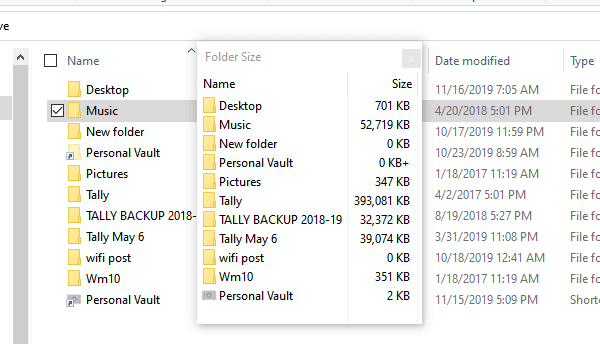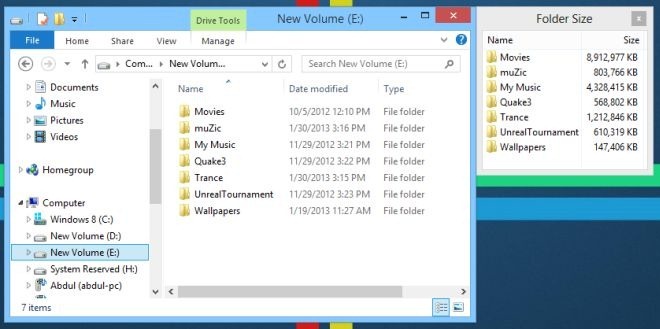

Every time you navigate through a folder structure in Windows Explorer, the OS would have to perform a recursive scan of the subfolder structure within each folder to get the file and folder sizes and add them up. The primary reason why the Windows UI does not provide this functionality is performance. You can view the size of folders by hovering over the folders in Windows Explorer (as shown below): That question is, “Why can’t I see the size of folders in Windows Explorer?” The simple answer is that the behavior is by design. Today’s post is a very short one, but it does address one of our most common Shell / Windows UI questions. Be sure to read the developer’s notes.First published on TECHNET on May 08, 2009 This makes file management much easier, so you’ll easily be able to identify which folders and files are wasting the most space.

Switch on Folder Size and you are ready to go. Computers are supposed to make everything easy and save time, not waste time, so why tolerate this any longer?įolder Size fixes this problem, by scanning folders in the background and displaying the result in a column in Windows Explorer, as in the screenshot below.ĭownload and install Folder Size, then start Windows Explorer, ensure “Details View” is selected, right click on any of the column headers. One of the many shortcomings in the default Windows file manager (Windows Explorer) is that normally, to find out how large a folder is, you have to right click on the folder, select “Properties”, then wait for the folder (and all sub folders) to be scanned before seeing the final result displayed in the “General” tab. I use it with no problems on my Windows systems. It is even Open Source, so you can improve it if you wish. It isn’t large, it isn’t guaranteed to work (but it does) and it is free. So, why not use a small utility to add some of the functionality that is missing in Windows Explorer?įolder Size is one such utility. There are many alternatives to Windows Explorer available, but it is so much easier to continue to use the default application that most people continue to use it, despite its shortcomings. Windows has many shortcomings, so it useful to be able to easily add software that makes it nicer or more fun to use.


 0 kommentar(er)
0 kommentar(er)
